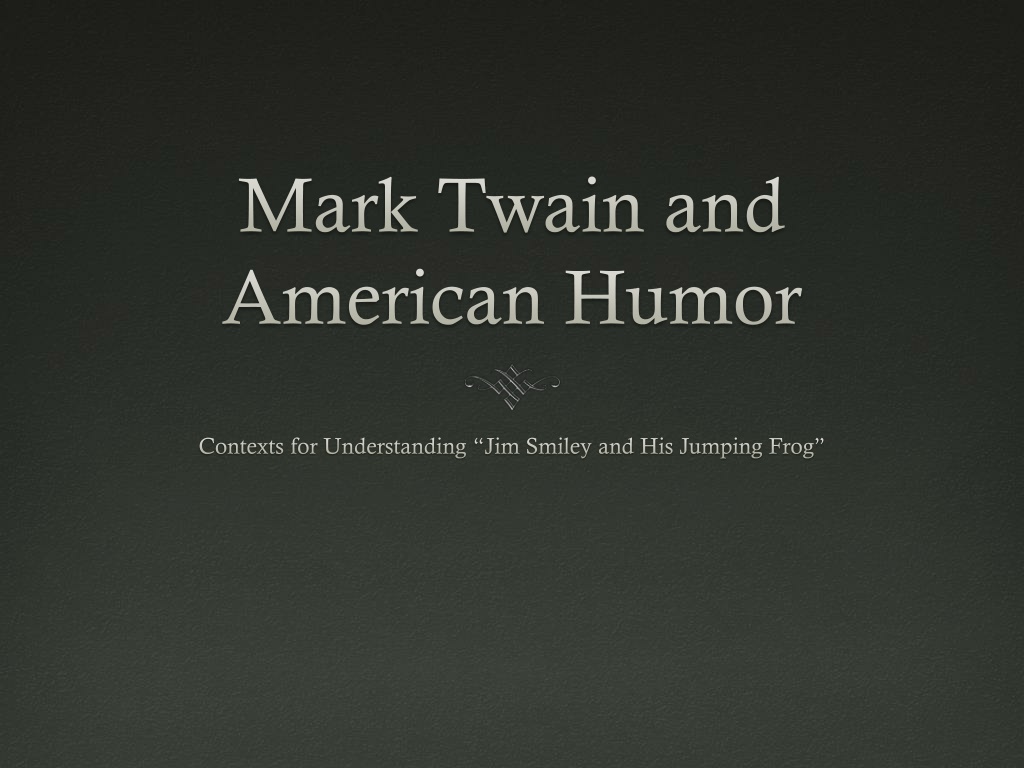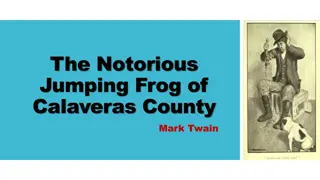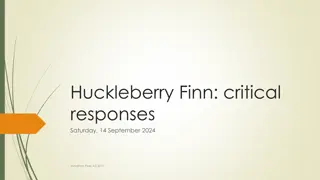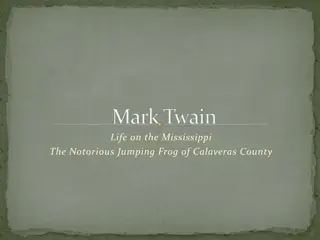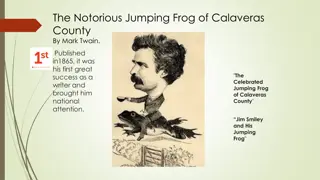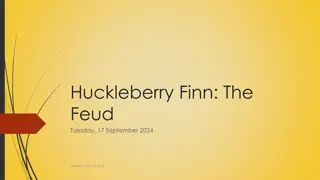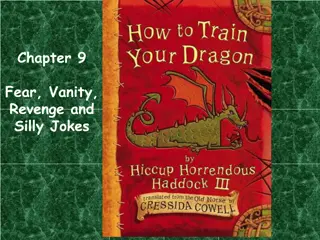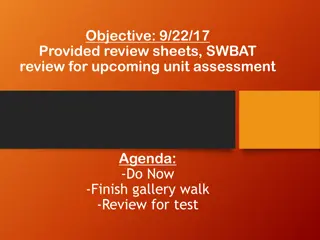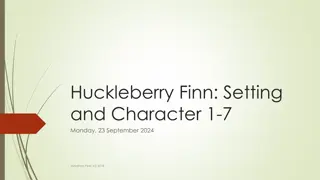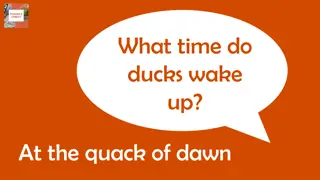Mark Twain and American Humor: Exploring Southwestern Humor and 19th-century Jokes
Delve into the roots of American humor through the works of Mark Twain, examining Southwestern humor from 1830-1860 characterized by tall tales and dialect humor. Discover the wit of women humorists like Frances Whicher and Marietta Holley. Explore humor forms like anecdotes, hoaxes, and frame tales with a touch of the unexpected charm of 19th-century jokes.
Download Presentation

Please find below an Image/Link to download the presentation.
The content on the website is provided AS IS for your information and personal use only. It may not be sold, licensed, or shared on other websites without obtaining consent from the author. Download presentation by click this link. If you encounter any issues during the download, it is possible that the publisher has removed the file from their server.
E N D
Presentation Transcript
Mark Twain and American Humor Contexts for Understanding Jim Smiley and His Jumping Frog
Overview Southwestern Humor Popular dialect humor Humor by women writers Some 19th-century jokes Twain s How to Tell a Story Petrified Man Hoax
Southwestern Humor (1830- 1860) Arose from the tall tale tradition seen in Davy Crockett (Narrative of the Life of Davy Crockett, 1834) and Mike Fink stories. Use of dialect, earthy language and incidents, crude physical humor, and cruelty. Conflicts with nature described in a humorous way so as to control the version of the tale and make the wilderness more manageable (stories about bear hunts, etc.). The land itself and its creatures are larger than life, mythical. Often an element of triumphant trickster, or the trickster who is himself tricked or bested in a trade. In some of these, character of humorist is played off against a character representing an educated or Eastern elite.
Forms of Southwestern Humor The sketch. The anecdote. Example: Twain's "The Dandy Frightening the Squatter." The hoax. Author reports wonders of the western frontier; most hoaxes masquerade as travel letters. Example: Twain s Petrified Man hoax. Author hints at fictionalizing role and tries to tip off the readers The frame tale. Example: Twain's "The Celebrated Jumping Frog of Calaveras County,
Women Humorists Frances Whicher (1811- 1852), The Widow Bedott Papers Marietta Holley (1836-1926), Samantha or Josiah Allen s Wife, sometimes called the female Mark Twain. Among her most popular books was Samantha at Saratoga (1887).
A Petrified Man The Cardiff Giant A 10 gypsum statue carved and buried behind a barn in upstate New York. Workers discovered it in 1869, and it sparked a debate over whether there were giants in the earth as the Bible proclaimed. Other petrified men had been discovered earlier.
Some 19th-century Jokes Who is that man who keeps saying it is always the unexpected that happens? I m not sure. Probably an attach of the weather bureau. Foreigner I think I may say now that after two years of constant study I understand the English language. Native Nonsense! Have you ever tried to grasp the meaning of an insurance policy?
More 19th-century Jokes She I m sure, Mr. Goodby, there are many girls who could make you far happier than I could. He (dolefully) That s the trouble; they could but they won t. Stylish Lady visitor (to small boy, while waiting for hostess to come down) What is the matter with Fido, that you are watching him so closely? Small boy Mamma said that your hat was enough to make a dog laugh, and I wanted to see him do it.
Popular Humorists David Ross Locke ( Petroleum V. Nasby )(184-1867) Charles Farrar Brown or Artemus Ward William Wright ( Dan DeQuille ) (1829 1898) Samuel Clemens ( Mark Twain ) (1835-1910) Henry Wheeler Shaw ( Josh Billings (1818-1885) Picture shows Billings, Twain, and Nasby.
The Lecture Circuit (1870s- 1900) Humorists like Twain traveled on the lecture circuit, sometimes with two of them traveling and performing together in lecture halls (there were no comedy clubs). Twain advertised his lectures with the phrase The Trouble Begins at 8. Theater owners would put out the picture of Twain on a frog, or even just a picture of a frog, and audiences would know he would be appearing at that theater. Like Dickens, Twain would not just read from but perform his work.
Finley Peter Dunne (Mr. Dooley ) (1867-1936) Dialect humor was popular, especially in performance and in the newspapers. What dialect is this? Th diff rence between Christyan Scientists an doctors is that Christyan Scientists think the se no such thing as disease, an doctors think there ain t anythin else. An there ye ar-re. What d ye think about it? asked Mr. Hennessy. I think, said Mr. Dooley, that if th Christyan Scientist had some science an the doctors more Christyanity, it wudden t make anny diff rence which ye called in if ye had a good nurse.
Mark Twain, from How to Tell a Story The humorous story may be spun out to great length, and may wander around as much as it pleases, and arrive nowhere in particular; but the comic and witty stories must be brief and end with a point. The humorous story bubbles gently along, the others burst. The humorous story is told gravely; the teller does his best to conceal the fact that he even dimly suspects that there is anything funny about it.
Twains Humor Extended to Languages Essay The Awful German Language I heard a Californian student in Heidelberg say, in one of his calmest moods, that he would rather decline two drinks than one German adjective. The Jumping Frog in English, Then in French, Then Clawed back into Civilized Language Once more by Patient, Unremunerated Toil by Mark Twain.
Twain on The Frog in French From his introduction: This gentleman s article is an able one (as articles go, in the French, where they always tangle up everything to that degree that when you start into a sentence you never know whether you are going to come out alive or not.) From Twain s translation of the French version: This Smiley had an animal which the boys called the nag of the quarter of hour, but solely for pleasantry, you comprehend, because, well understand, she was more fast as that! [Now, why that exclamation? M.T.]
From Puddnhead Wilsons Calendar Nothing so needs reforming as other people's habits. If you pick up a starving dog and make him prosperous, he will not bite you. This is the principal difference between a dog and a man.
Puddnhead Wilson, continued Why is it that we rejoice at a birth and grieve at a funeral? It is because we are not the person involved. It is easy to find fault, if one has that disposition. There was once a man who, not being able to find any other fault with his coal, complained that there were too many prehistoric toads in it. When angry, count four; when very angry, swear.
